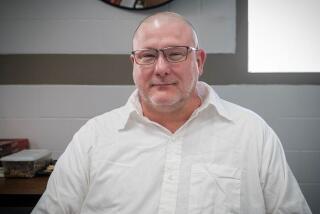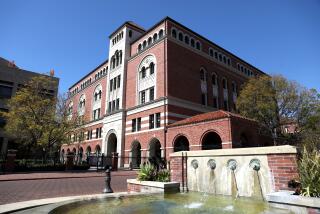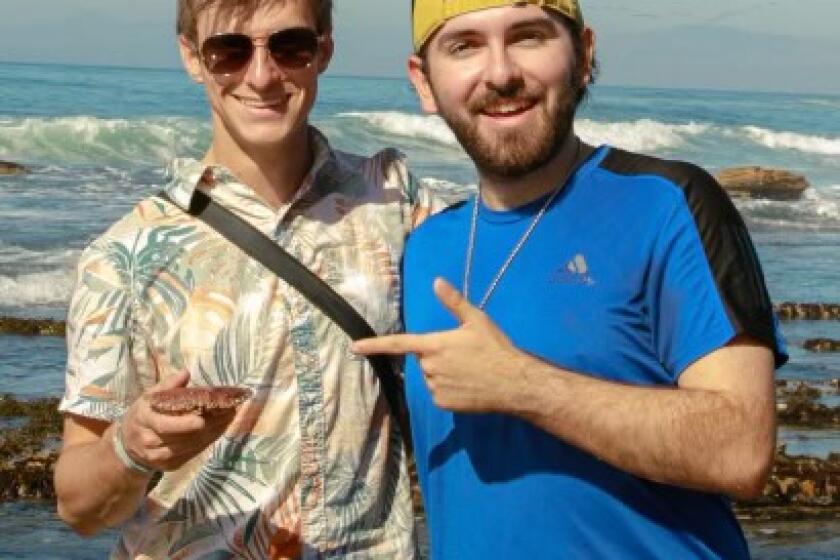UCLA’s legal fees in fatal lab fire case neared $4.5 million
After UCLA chemistry professor Patrick Harran walked out of court in June, his lawyers issued a news release hailing the “first-of-its-kind” deal that all but freed him from criminal liability in a 2008 lab fire that killed a staff researcher.
The “deferred prosecution agreement” that allowed Harran to avoid pleading guilty or no-contest to any charge might have been a novel resolution, as his attorneys said.
But it certainly didn’t come cheap.
Top-tier law firms hired to defend him and the University of California against felony charges in the death of Sheharbano “Sheri” Sangji charged more than 7,700 billable hours and nearly $4.5 million in fees, according to documents obtained by The Times through a California Public Records Act request.
Nearly five dozen defense attorneys, paralegals and others billed for work on the case, the records show. One attorney charged $792,000 in fees and at least four other lawyers billed more than $500,000 each — all for pretrial work.
The University of California paid the fees out of its publicly funded pocket. UCLA said in a statement Wednesday that the expense was justified.
“We defended ourselves and our faculty member as was our right and obligation, using funds in a systemwide self-insurance program,” it said.
Sangji, 23, was not wearing a protective lab coat in Harran’s laboratory on Dec. 29, 2008, when a plastic syringe she was using to transfer t-butyl lithium from one sealed container to another came apart, spewing a chemical compound that ignites when exposed to air. She suffered extensive burns and died 18 days later.
In late 2011, the Los Angeles County district attorney’s office charged Harran with three felony counts of willfully violating state occupational health and safety standards in what was thought to be the first criminal case involving an academic lab accident. Harran, ultimately charged with four felonies, was accused of failing to provide proper safety training and failing to require protective gear for lab workers.
Harran and UCLA contended that Sangji, who earned a bachelor’s degree in chemistry five months before going to work in Harran’s lab in October 2008, was a seasoned chemist who chose not to wear protective gear and was trained in the experiment she was performing.
UCLA, in its statement, said “this accident was a terrible tragedy, not a crime” and called the criminal charges “an unfortunate distraction” from its efforts to improve lab safety in the aftermath of Sangji’s death.
Harran, 45, was a rising star when he joined the faculty in July 2008 as the first Donald J. Cram Chair in Organic Chemistry. For him, the criminal case had huge personal stakes and career implications: If convicted, he faced up to 41/2 years in prison and the loss of state and federal grant money for his research.
The University of California hired premier Los Angeles law firms to represent Harran and its Board of Regents, which faced identical charges.
Thomas O’Brien, a former U.S. attorney in Los Angeles, led a team from Paul Hastings on behalf of Harran. Craig Moyer of Manatt, Phelps and Phillips represented the regents. A third firm, Munger, Tolles and Olson, worked on the case to a lesser extent.
The Paul Hastings firm collected about $3.1 million in fees for defending Harran, records show. O’Brien, a partner, billed about $526,000, at hourly rates of up to $750. Three associate members of the firm billed more than $500,000 each, including one who charged about $792,000 at hourly rates of up to $630.
Charges against UC were dropped in July 2012 when the regents agreed to follow comprehensive safety measures and endow a $500,000 scholarship in Sangji’s name. UCLA said it has since spent $20 million on enhancing lab safety.
For its efforts, Moyer’s firm reaped nearly $1.3 million in fees, records show. His billings totaled more than $616,000, at hourly rates ranging from $582 to $620.
The case against Harran continued for nearly two years after the regents’ charges were dropped, as he dug in against accepting any plea bargain that carried a criminal conviction. His lawyers launched a barrage of motions and other legal attacks on the prosecution’s case, including a petition to the California Court of Appeal.
Finally, on June 20, Harran struck a deal with prosecutors. He admitted no wrongdoing, but agreed to develop and teach an organic chemistry course for inner-city students for five summers, perform 800 hours of community service in the UCLA Hospital system, and pay $10,000 to the Grossman Burn Center.
If he fulfills his obligations under the agreement, the charges will be dismissed after five years.
Harran declined to comment. In a statement, his lawyers said he “has met and will continue to meet” the requirements.
Neither UCLA nor the law firm directly addressed the issue of fees in their statements to The Times.
“As soon as this tragic accident occurred, the Regents made clear that they would stand behind Professor Harran and provide for his defense,” the Paul Hastings firm said. “For nearly five years, we have worked in close coordination with the Regents and their counsel to defend this complicated and high-stakes case.”
Sangji’s sister, Naveen, has called the sanctions against Harran and UCLA “barely a slap on the wrist.” She noted that previous safety violations in his lab were not corrected before her sister’s death and that UCLA had ignored the “wake-up calls” of earlier accidents in other labs.
On Wednesday, she decried the nearly $4.5 million in legal fees — enough to buy 86,000 lab coats.
“Had UCLA spent even a tiny fraction of this money and effort on laboratory and chemical safety training and fire resistant gear … Sheri might still be with us today,” she said.
Twitter: @kchristensenLAT
More to Read
Start your day right
Sign up for Essential California for news, features and recommendations from the L.A. Times and beyond in your inbox six days a week.
You may occasionally receive promotional content from the Los Angeles Times.







